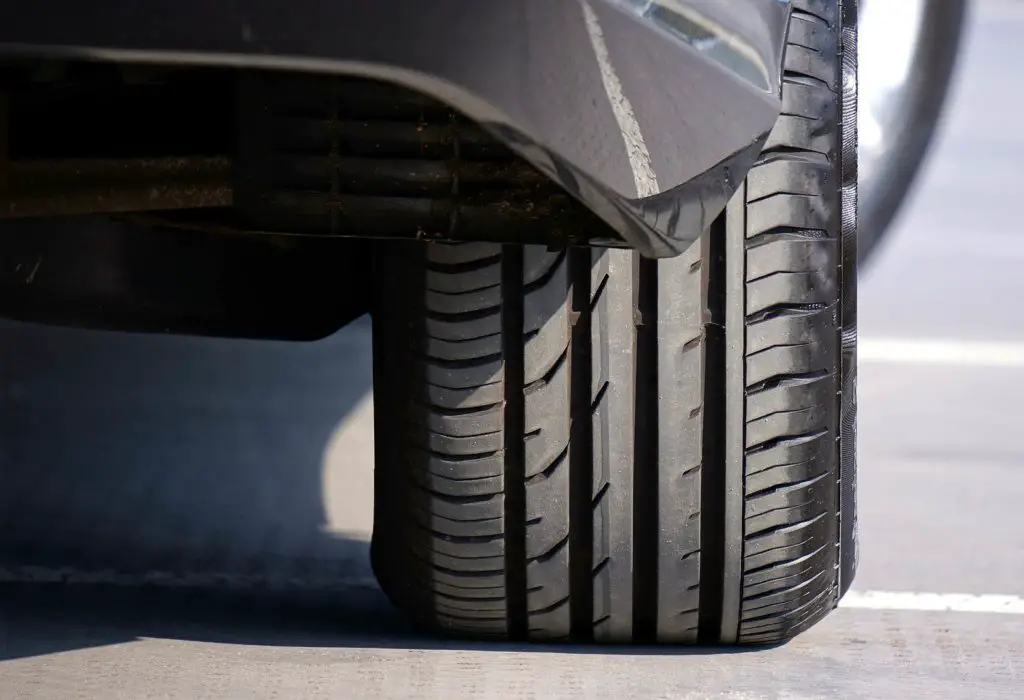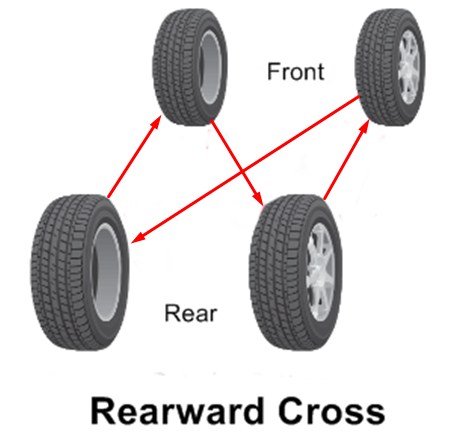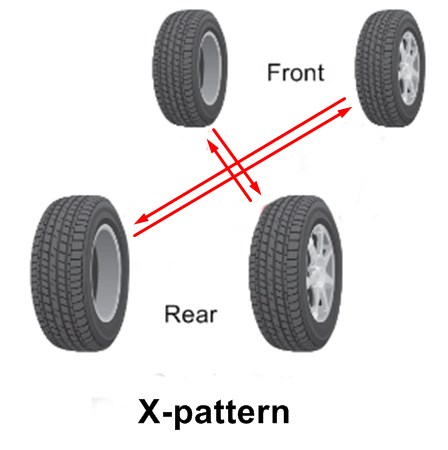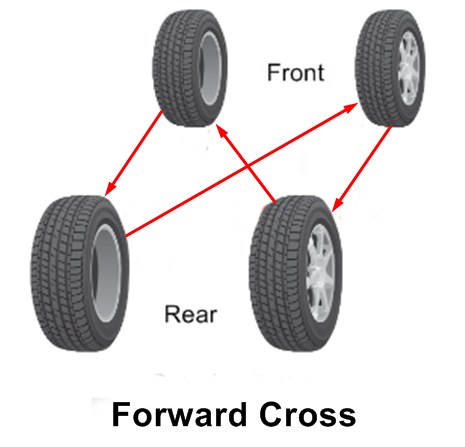
Tire rotation refers to routinely reposition of your vehicle’s tires in various settings, from side to side or back to front. It is a vital component for maintaining the safety and upkeep of your car tires. Tire rotation may actually be a prerequisite for keeping your tires covered under a warranty. Tire rotation patterns are important implying that you should identify the best one for your vehicle depending on its type.
Tire rotation should be done according to the manufacturer’s recommendations, or after every five thousand miles if not specified by the manufacturer. This usually means changing your vehicle’s oil as well. Regular tire rotation enables you to visually inspect them any damage, have them rebalanced in case of vibrations, check their air pressure, and inspect their tread depth.
Why You Should Rotate your Tires
Tire rotation is important for your standard tire care for various reasons. To begin with, routine tire rotation enables you to spread the wear across all the four tires thereby maximizing their tread life. This is due to the fact that the specific positions of your car require a different give from each of the tires. For example, for front-wheel drive vehicles, the front tires will take a larger proportion of the friction and torque required for accelerating, turning and braking. This can potentially lead to more or less wear on the tire. It is advisable to rotate the new tires after five thousand miles because fresh, deep tire tread is more susceptible to uneven wear.
In addition, even tire tread wear keeps the tread depth on your tires uniform which helps keep handling and traction consistent across all the four tires. This improves braking and cornering performance and generally improves your overall driving experience.
Finally, tire rotation enables you to efficiently use your tires. For instance, with all-wheel drives, having evenly worn tires tend to lower drivetrain stresses, reducing wear on expensive drive components. This makes the tire last relatively longer as compared to if they were not rotated at all.
Merits of Rotating Your Tires
Regular tire rotation is vital in terms of improving car safety and maintenance. Ideally, this process should be done every six months, or every time you change your vehicle oil. There are so many benefits of rotating your tires, let’s take a look at some of them:
Even Tire Wear
Lack of or irregular tire rotation results in uneven tire wear because the tires are usually exposed to different types of stress according to the type of the vehicle. Your vehicle’s front axle tires will wear differently from those of the rear axle. This necessitates the need for rotation for even wear. Through rotation, tires can serve the front and the back of the vehicle evenly thereby balancing the stress and evening out.
Smooth and Safe
Generally, vehicles with regular tire regulations are easier to use and safer to ride. In fact, it results in having smoother rides. Actually, when you think about it, the thought of having uneven tires is discomforting in itself. Riding it is going to cause you to have unnecessary bad driving experience.
Saves you money
Most drivers are always looking out for the cheapest and most efficient ways to manage their driving experiences and expenses. It is a good thing then that tire rotation offers just that, saving you money and lots of it if done correctly. Tire rotation also increases the lifespan of your tires especially when they are rotated at regular intervals. This elongated lifespan means that you will not necessarily have to replace them as often which enables you to keep car operation costs relatively down.
Reduces Noise and Vibration
Tires with uneven tear generally lead to more vehicle vibration, usually noticeable even from the steering wheel. Uneven tires also increase road noise which leads to sound pollution to other road users and the surrounding environment at large. Simple tire rotation alleviates both issues and enables you to get a better driving experience.
When to rotate your tires
Generally speaking, it is advisable to rotate your tires every 3,000-7,000 miles. However, you should use your owner’s manual to verify the recommendations for your car in particular for the best results. Any noticeable uneven wear on the tire is generally a sign of rotation need for your tires. This can be measured using the tread depth of the tire on both the rear and front tires. Any significant depth difference between the front and back tires shouts the need for immediate tire rotation. You should also consider measuring the tread depth for the outside and the inside of your tires to check the wear levels. If there is a difference in the wear levels or depths, then you should either have them rotated or get a mechanic to check it out since there may be an alignment issue with the suspension.
Beware of any successive noises that may emanate from the wheels as you drive. Any increased road vibration or road noises may mean that there exists some unevenness in the tires caused by uneven tire wear.
How to Rotate Your Tires?
Turn off the car and apply the parking brake to ensure the car is totally immobile. Proceed by loosening the lug nuts on all the wheels. However, you should not take them off at this point. Loosening them with the car on the ground makes removing them a lot easier. Go on to raise the car up the jack by using two jacks which allows you to raise the two wheels up simultaneously. Go ahead to establish the best way to switch the tires around to the right place then proceed to move them around.
When putting your wheels back onto the sockets, do not fully tighten the lug nuts immediately. Just put them on as much as you can for the time being. Continue by lowering the car down from the jacks then start to tighten the lug nuts again. For best results, tighten the nuts diagonally from one another as this makes you avoid brake motor warping.
Saving Money on Tire Rotation
Do-It-Yourself (DIY) paradigm is one of the easiest ways to go about tire rotation. This work ideally takes less than half an hour to complete and is pretty straightforward so you should not feel too bummed out about actually doing the work.
It is important to note that if you suspect something more than simple tire wear is wrong with your car or tires then you should just look for a mechanic to diagnose and fix it. However, if it is just tire wear, you can rotate all by yourself following the steps discussed above. Tire rotation is relatively inexpensive and does not take too much time.
Another cost-saving trick is having your tires rotated whenever you get a set of new tires. Luckily, tire rotation is actually free in most places if you are acquiring a new tire or set of tires. It is therefore advisable to combine the two activities together to save on both time, effort and money.
Tire Rotation for all-wheel drive (AWD) cars
AWD vehicles usually come with recommendations most of which indicate that it is advisable to rotate the rear tires to the front, opposite sides. In a similar way, you should have both the font sides situated opposite to each other in the rear. This rotation pattern is usually called the X-cross pattern. This pattern ensures all tires rotate in opposite directions each time ensuring they get to be placed in all the places. Other rotation methods only switch the direction they rotate just once during the entire rotation procedure.
Which direction should you rotate your tires
Generally, the best tire rotation pattern for your vehicle depends on a number of factors. These include the type of tire you are using, whether your vehicle is rear, front, four-wheel or all-wheel drive. Other factors to be considered are, whether the front and back tires are of the same size and whether you have full-size spares that can be rotated through as well as opposed to a temporary spare.

Rearward cross
For all-wheel, 4-wheel or rear-wheel drive vehicles, the recommended pattern is the rearward cross. This cross involves moving the rear tires to the forward axle and keeping them on the same side of the vehicle. The front tires are then moved to the opposite sides of the rear axle.

X-pattern
This pattern is recommended for front-wheel drive vehicles e.g. sedans and light-weight trucks. To do this, move all tires diagonally, i.e. switch the tires from one axle to the opposite then reposition them from one side to side.

Forward cross
This is the most widely used pattern, especially for front-wheel drive vehicles. It usually involves moving the front axle tires directly back then the rear tires are moved up diagonally opposite to the front axle.
For uniform size tires which are non-directional with full-size spare tire:
Ensure that you rotate all your full-size spare tire together with the other four to ensure that all the vehicle’s tires have even tread wear. This is important for a four-wheel or all-wheel drive vehicle since the small differences can result in undue strain on the car’s drive train.
Reward cross (four-wheel drive or rear-wheel drive vehicle)
Move both rear axle tires directly forward to the front axle with the spare tires moving to the right side of the rear axle. Move the right side diagonally back to the left side of the rear axle making the left front tire your new spare tire.
Forward Cross (Front-Wheel Drive)
Move the rear tires diagonally to the opposite sides on the front axle with the new spare tire being the right front tire. This spare is placed on the rear axle’s right side with the front axle’s left tire being moved directly back to fit into the left rear position.
